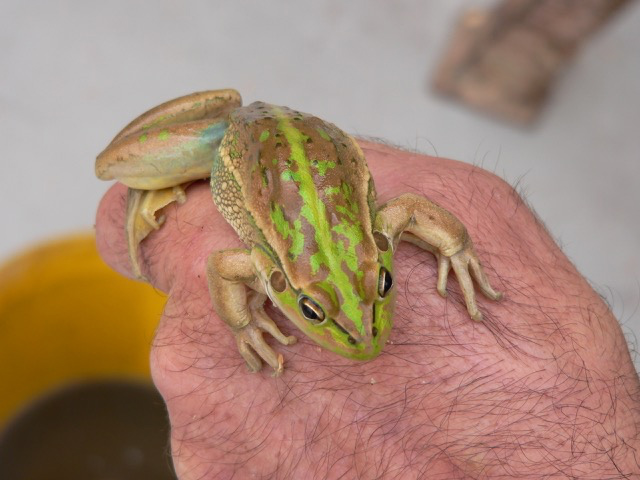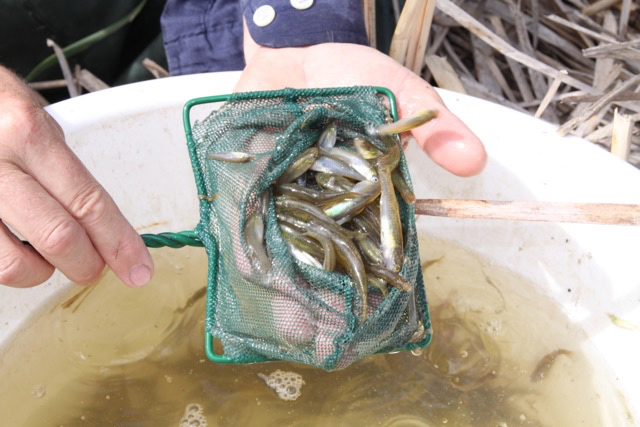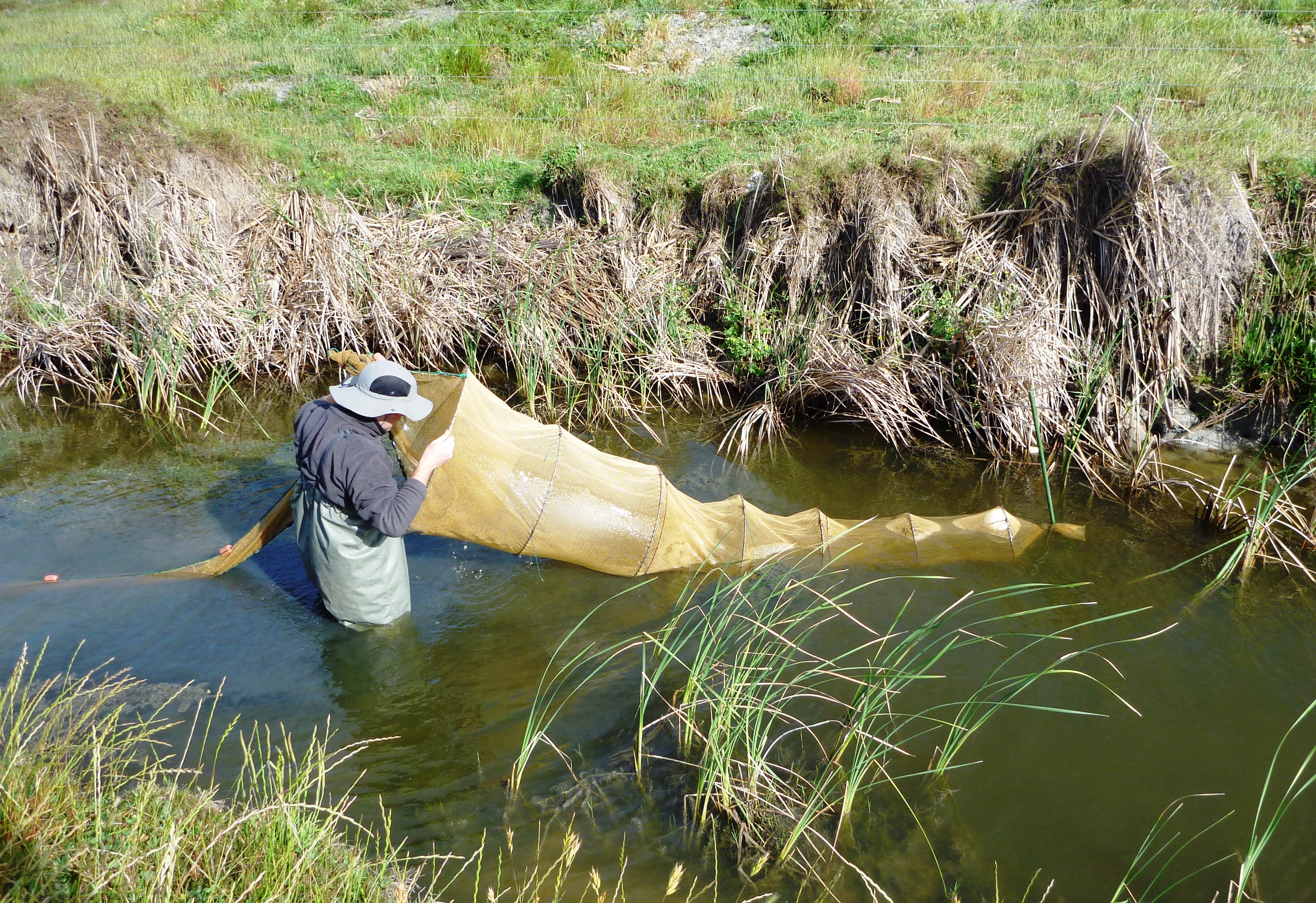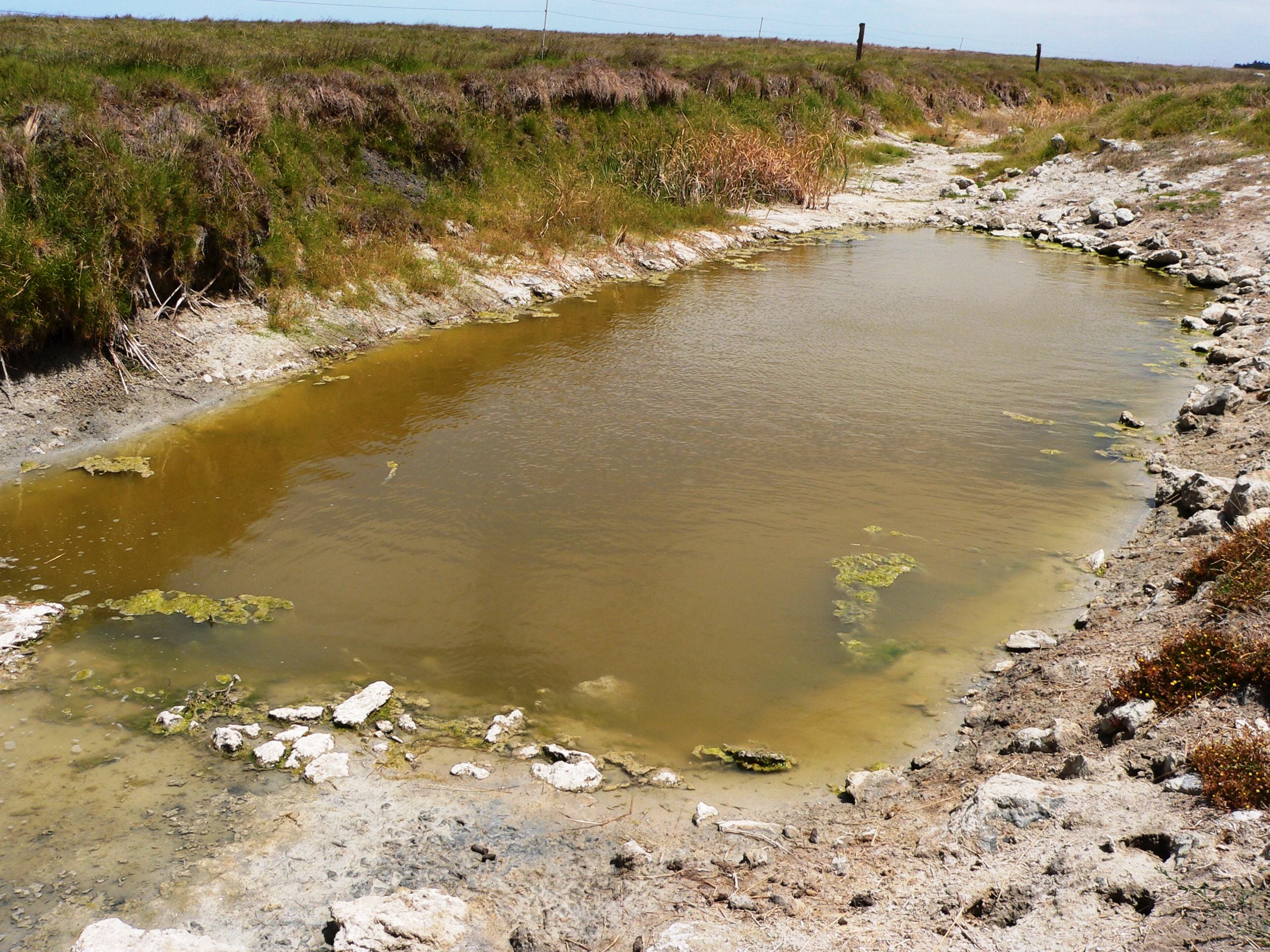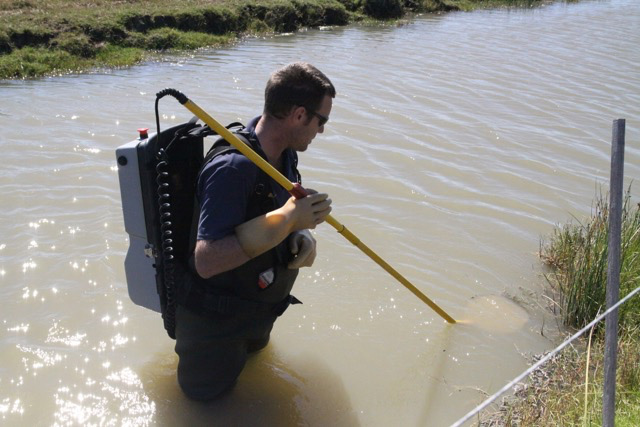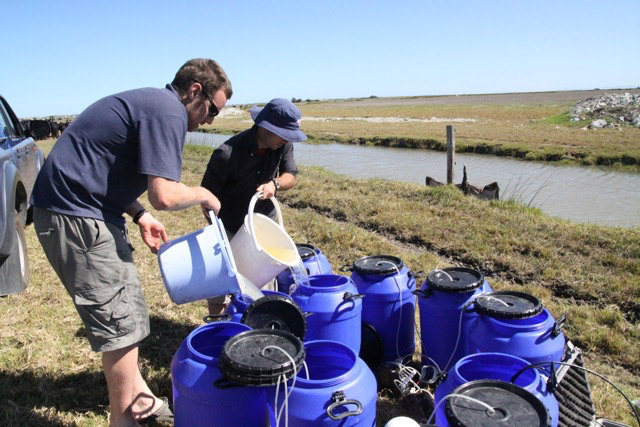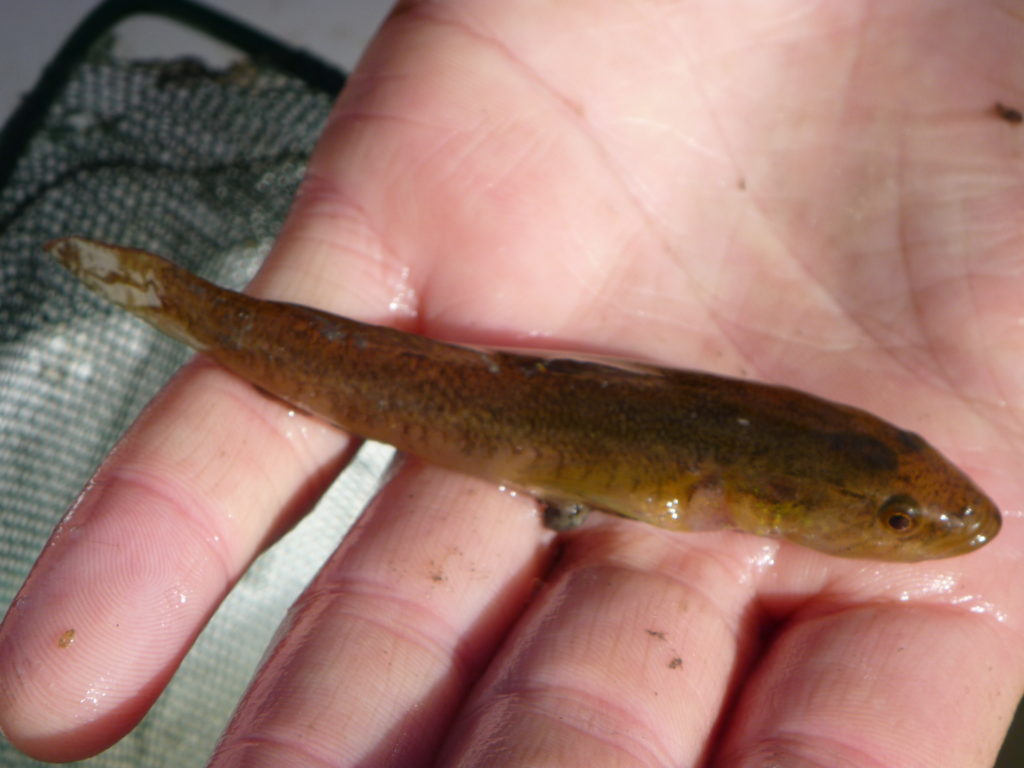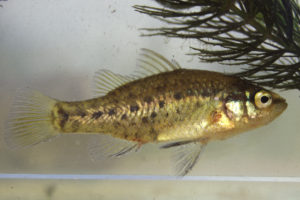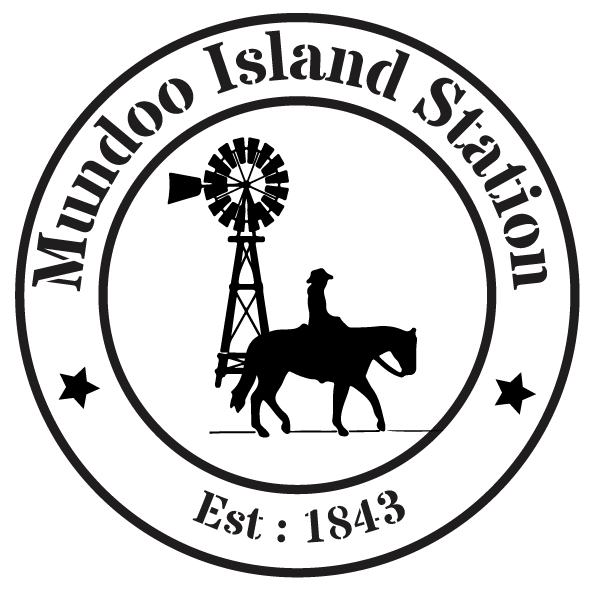
Mundoo Island Station
Est - 1843
5 Day Weather Forecast
Endangered Species
EXCITING NEWS:
We recorded Orange-bellied parrot (OBP) sightings on 3 occasions during the 2021 winter OBP surveys on Mundoo Island Station!
These are the first sightings since 2013 - great news for this species which is on the brink of extinction.
Rare sightings such as these make our thousands of hours of voluntary nature surveys worthwhile.
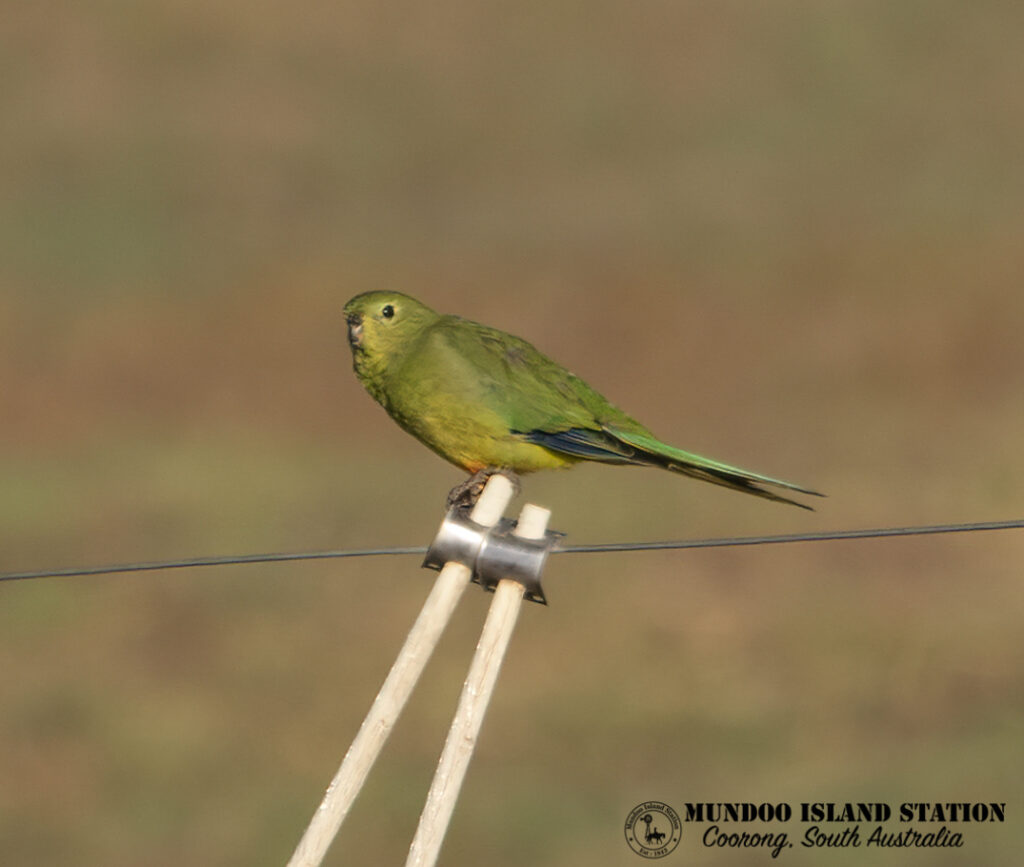 .
. 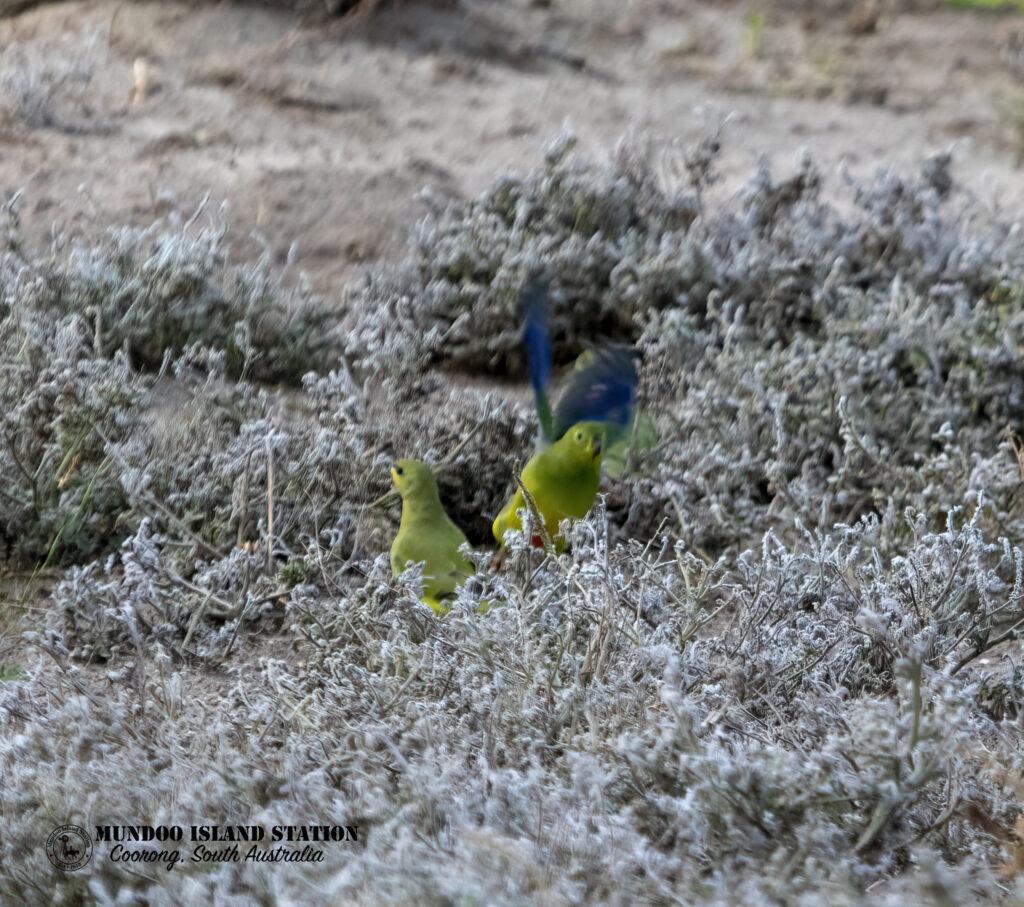
Enhancing the biodiversity of our wetland environment for native species to flourish is of high importance.
We have a number of endangered or critical species that have been recorded on Mundoo Island Station including the Orange-bellied parrot, Southern bell frog, Australasian bittern and two native fish: Southern pygmy perch and Murray hardyhead.
We conduct many surveys to ascertain the various species and numbers of animals and birds using our wetlands for habitat, food source and breeding.
These surveys include Orange bellied parrots, Australasian bitterns, Latham's snipe, migratory shorebirds, Cape Barren Geese, waterfowl & general bird surveys, turtles, bats, frogs, tadpoles and regular native fish species to name a few.
During the winters of 2013 and 2014, 140,000 trees, shrubs and grasses, based on different vegetation zones, were planted on Mundoo & Ewe Islands. The plantings have enhanced the ecological value of the area and provides a diverse range of habitat and food source for our many native animals and birds.
Autumn 2016 OBP Recovery Program Summary
NATIVE FISH
The wetlands of Mundoo & Ewe Islands are home to many native fish species, but none more important than the Southern pygmy perch (endangered in South Australia) and Murray hardyhead (critically endangered in South Australia).
The Southern pygmy perch and Murray hardyhead populations suffered considerably during the Millennium Drought due to destruction of their habitat.
We had 2 sites on our property where we were nurturing both species, but sadly the evaporation over summer destroyed both sites. Salinity levels increased dramatically in remnant pools of still water, making fish survival almost impossible at the time.
The University of Adelaide (Dr Scotte Wedderburn) are continuing to monitor these important refuge sites and the Government undertook a release of both species, that were held in captivity, on Mundoo Island following the drought recovery period.
Native fish re-introductions were undertaken on Mundoo Island in the week of 26th -30th March, 2012 by the Department of Environment and Natural Resources, Critical Fish Habitat Project.
A summary of the March 2012 re-introductions that were undertaken on Mundoo Island are as follows:
Approximately 3500 Murray hardyhead were released into Mundoo Drain East. These fish were sourced from a surrogate refuge site near Mt Torrens in the Adelaide Hills and are offspring from fish that were rescued from Rocky Gully and Boggy Creek Wetland.
Approximately 280 Southern pygmy perch were also released into Mundoo Drain East (approximately 300-400 metres from the Murray hardyhead site). These fish were bred at Flinders University from rescued fish from the Hindmarsh Island area.
The third round of native fish re-introductions for the Department of Environment, Water and Natural Resources Critical Fish Habitat project was undertaken on Mundoo Island during the week of 3rd - 7th December, 2012.
Approximately 3500 Murray hardyhead were released into Mundoo Drain East.
This takes the total number of threatened fish released into waterways on Mundoo Island to over 7,000. The majority have been Murray hardyhead with a small number of Southern pygmy perch.
As part of the re-introduction process, follow up monitoring has been undertaken to determine the success of the re-introductions. Two follow up monitoring rounds have now been undertaken, the first in late Feb/early March 2012 and the second in November 2012.
Yarra pygmy perch: 10 re-introduced fish have been recaptured (autumn 2012 - 0 fish, spring 2012 - 10 fish).
Southern pygmy perch: 17 re-introduced fish have been recaptured (autumn 2012 - 12 fish, spring 2012 - 5 fish).
Murray hardyhead: 0 re-introduced fish have been recaptured. A wild population has been sampled at one location within the Lower Lakes region.
Southern purple-spotted gudgeon: 4 re-introduced fish have been recaptured (autumn 2012 - 3 fish, spring 2012 - 1 fish).
These numbers are encouraging and may be starting to suggest that the re-introduction process is having a positive result on threatened species populations in the Lower Lakes region.
Update
Monitoring of fish populations has continued each March from 2013 to 2018 by the University of Adelaide, which is funded by the Murray-Darling Basin Authority (MDBA). Southern pygmy perch was recorded at a monitoring site for several years until its apparent absence in 2017 and 2018. The University of Adelaide may monitor an additional site or two in March 2019 in attempt to locate the species on Mundoo Island. Similarly, Murray hardyhead was rarely captured on Mundoo Island in recent years but the species is doing well in the surrounding habitats. Yarra pygmy perch, another threatened fish species in the region, seem to have struggled during and after drought, and apparently the reintroductions have been ineffective. A six week search (by the University of Adelaide and Aquasave-NGT) in the region at the end of 2018 hopes to locate any remaining Yarra pygmy perch populations, and the project is funded by the MDBA and the Commonwealth Environmental Water Office. Significantly, the region around Hindmarsh Island and Mundoo Island is the only location where Yarra pygmy perch has been recorded in the entire Murray-Darling Basin.
Southern pygmy perch were recorded on Mundoo Island Station in March 2020 - an encouraging sign.
